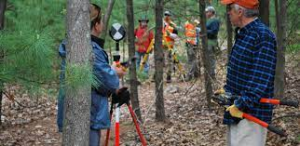Paleopathology is the study of diseases, viruses, and epidemics throughout history and their effects on individual people, animals, environment, and societies as a whole. It is an area of study that ties anthropology, archaeology, and forensics together to investigate diseases and their impacts. Additionally, contact between societies can be tracked through the spread of diseases, in which groups transmit diseases when they travel and trade with other groups. Viruses have been around for all of human existence, and have severely affected human development and growth, and paleopathologists strive to discover and research these effects in order to piece together the entire existence of humanity.
10,000 years ago, the shift to agrarian life resulted in sweeping epidemics and brought forth devastating consequences on developing groups (History 2019). Agriculture allowed the creation of large communities in which people no longer hunted and gathered for food, which in turn led to the domestication of animals. Overpopulation, malnutrition, and overcrowding allowed disease to run rampant, rapidly devastating societies. Additionally, this newly created physical connection between humans and animals eventually allowed a direct transmission of diseases such as malaria, tuberculosis, and smallpox from animals to humans, which wiped out large portions of populations, and directly altered human biological systems for future generations.
The complete effects of disease on the entirety of human evolution and development are immeasurable. However, paleopathologists have developed several analysis methods in order to pinpoint these consequences. Bone analysis is one of the most prevalent methods, in which archaeologists examine bone structure and composition in order to determine which diseases that particular person had at their time of death. Teeth are by far the most useful body part in determining disease affliction. The genome sequence of several diseases can be preserved within teeth, and paleopathologists have been able to recreate these sequences to study the evolution of disease throughout history

Paleopathologists were able to recreate the genome sequence of smallpox shown above from dental analysis of Viking remains (Autoren 2020).
Smallpox, one of the most lethal human diseases throughout history, has remained a mystery to paleopathologists for years. Claiming between 300-500 million human lives in the 20th century alone, researchers recently found Vikings from over 1400 years ago who were afflicted with smallpox, noted by residue found from dental analysis, definitively creating a baseline approximation for the development of the deadly disease (Ktori 2020).

Picture of the 1200 year old Viking site in Öland, Sweden, that contained traces of smallpox (Page 2020).
Before this discovery, scientists have relied on vague analysis of Egyptian mummies, and were unsure about the origins of smallpox. Now, they have been able to reproduce the genome sequence and compare the virus to its current sequence, allowing paleopathologists to start effectively researching smallpox’s evolution since the Viking age. The lethality of the strain that was found within the Vikings’ teeth is currently unknown, as the severity of the disease cannot be measured, but researchers have hypothesized it must have been noticeable considering such a large amount was found. Pushing back the earliest known evidence of smallpox by 1000 years, this groundbreaking discovery opens a pathway for more extensive research on diseases and their influence throughout history.
Additional Content for Further Discovery
Works Cited
Autoren Mühlemann B et al. “Even The Vikings Had Smallpox.” Even the Vikings had smallpox | German Center for Infection Research. DZIF, July 24, 2020. https://www.dzif.de/en/even-vikings-had-smallpox.
Division of Tuberculosis Elimination. “History of World TB Day.” Centers for Disease Control and Prevention. Centers for Disease Control and Prevention, December 12, 2016. https://www.cdc.gov/tb/worldtbday/history.htm#:~:text=TB%20in%20humans%20can%20be,China%20(2%2C300%20years%20ago).
History.com Editors. “Pandemics That Changed History.” History.com. A&E Television Networks, February 27, 2019. https://www.history.com/topics/middle-ages/pandemics-timeline#:~:text=Communicable%20dise.
Institute of Medicine (US). “A Brief History of Malaria – Saving Lives, Buying Time – NCBI Bookshelf.” National Library of Medicine. NIH, 2004. https://www.ncbi.nlm.nih.gov/books/NBK215638/.
Ktori, Sophia. “Smallpox Found in Viking Teeth Proves Disease Plagued Humans for 1400 Years.” GEN. Genetic Engineering and Biotechnology News, July 24, 2020. https://www.genengnews.com/news/smallpox-found-in-vikings-teeth-proves-disease-plagued-humans-for-1400-years/.
Page, Michael Le. “DNA from Viking People Reveals the Unexpected History of Smallpox.” New Scientist. New Scientist, July 29, 2020. https://www.newscientist.com/article/2249835-dna-from-viking-people-reveals-the-unexpected-history-of-smallpox/.


